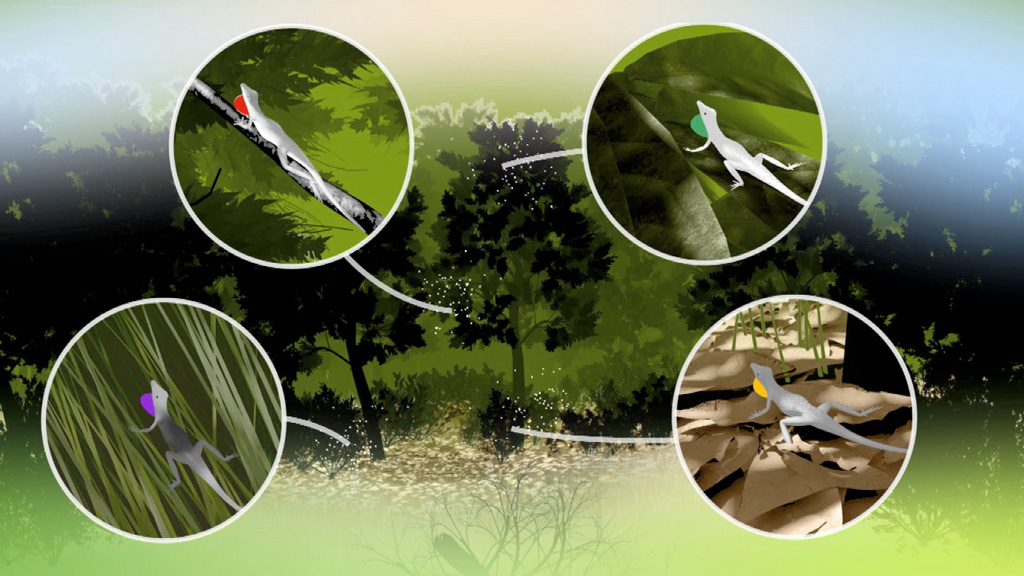Niche Partitioning Allows Similar Species to Coexist
Every species occupies an ecological niche, which is the role that species plays in its ecosystem. A species' niche includes the range of environmental conditions that species can tolerate, the biotic and abiotic resources that it needs to survive, and how it uses those resources (including time and space).
Additional Information: Biotic resources include living components, such as animals, plants, fungi, and microorganisms.
Additional Information: Abiotic resources include nonliving, physical, or chemical components, such as light, temperature, and water.
Species can coexist when their niches differ in one or more important ways–a process referred to as niche partitioning.
Additional Information: Coexistence means that two or more species occur in a space as stable populations over time. Co-occurrence is when two or more species exist together at a specific point in time, but their existence together is not necessarily stable. One species could be declining and eventually disappear due to competition.
Additional Information: Niche partitioning is the process by which natural selection drives competing species to occupy different ecological niches, allowing them to coexist. It is also referred to as niche differentiation or niche separation.
